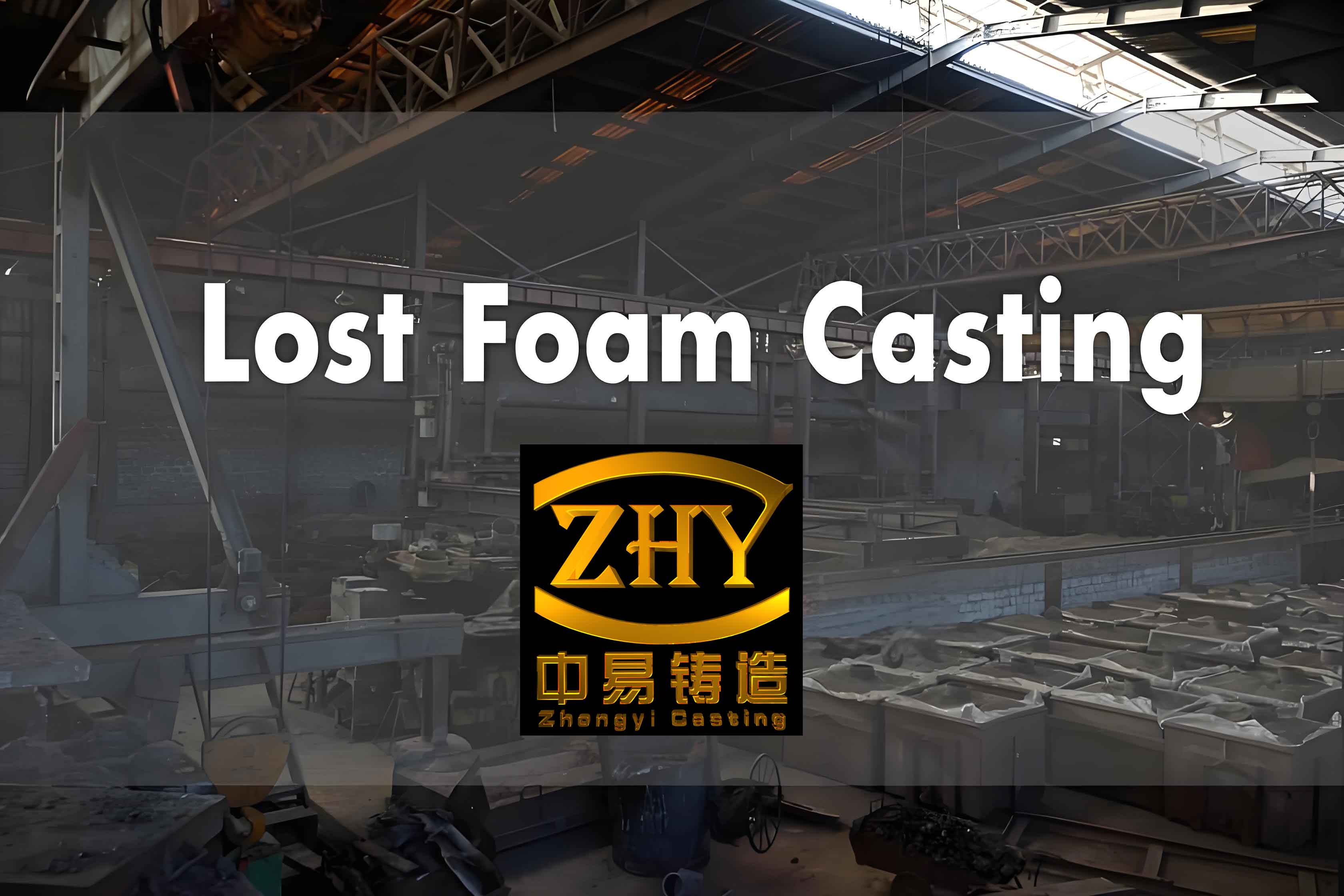
1. Introduction
The production of large thin-walled shell components, such as tractor transmission casings, presents significant challenges in traditional sand casting due to high costs, complex core preparation, and environmental concerns. Lost foam casting (LFC), an advanced near-net-shape casting technology, offers a sustainable alternative by eliminating the need for multiple cores, reducing material waste, and lowering energy consumption. This paper details the systematic development of an optimized Lost foam casting process for HT250 transmission casings, focusing on minimizing deformation, controlling defects, and enhancing cost efficiency.
Key advantages of lost foam casting over sand casting include:
- Simplified process flow (no binders or core boxes required).
- High recyclability of dry sand (≈95% reuse rate).
- Reduced tooling costs (single mold for complex geometries).
- Lower per-ton production cost (savings up to $1,000/ton for large thin-walled parts).
However, challenges such as dimensional instability, cold shuts, and shrinkage porosity necessitate rigorous process design and validation. This study integrates numerical simulation, experimental trials, and 3D model analysis to address these issues.
2. Product Structure and Process Analysis
The target component is a tractor transmission casing with the following specifications:
- Material: HT250 gray iron.
- Weight: 265.1 kg (theoretical).
- Dimensions: 816 mm × 530 mm × 578 mm.
- Wall thickness: 14 mm (min) to 50 mm (max).
Key challenges in lost foam casting:
- Deformation control: Thin walls and uneven thickness distribution increase susceptibility to warping during foam degradation and metal filling.
- Cold shuts: Incomplete fusion due to premature solidification.
- Shrinkage defects: Poor thermal management in thick sections.
A 3D model was reconstructed from legacy 2D drawings to facilitate virtual process design and simulation. Critical areas requiring deformation mitigation were identified, including flange joints and internal ribs.
3. Mold Design and Pattern Fabrication
3.1 Mold Design
The mold was split along the mid-plane into upper and lower halves, with the following parameters:
- Material: GBZL106 aluminum alloy.
- Dimensions: ≤1,100 mm × 900 mm × 600 mm.
- Surface roughness: Ra ≤1.6 μm.
- Coating: Teflon applied to cavities and cores to reduce friction.
Table 1: Mold Design Specifications
| Parameter | Value |
|---|---|
| Wall thickness | 12–15 mm (body) |
| Reinforcement ribs | 18–20 mm (frame) |
| Vent holes | 5–12 mm (aluminum) |
| Machining allowance | 3–5 mm |
3.2 Foam Pattern Production
Expandable polystyrene (EPS) beads were pre-foamed to a density of 25±1 g/L. Key process parameters included:
- Cooling water temperature: ≤40°C.
- Steam pressure: 0.45–0.6 MPa.
- Hydraulic pressure: 0.5 MPa.
The resultant white patterns exhibited smooth surfaces with minimal shrinkage or distortion. Dimensional accuracy was validated against CAD models (Table 2).
Table 2: White Pattern Dimensional Inspection
| No. | Location | CAD (mm) | Theoretical (mm) | Actual (mm) |
|---|---|---|---|---|
| 1 | Width | 390 | 394.3 | 394.1 |
| 2 | Length | 578 | 584.9 | 585.2 |
| 3 | Thickness (min) | 14 | 14.2 | 14.6 |
| 4 | Height | 816 | 825.8 | 825.5 |
4. Casting Process Design and Numerical Simulation
Three lost foam casting schemes were evaluated using Huazhu CAE simulation software:
4.1 Scheme 1: Horizontal Top Gating
- Sprue diameter: 50 mm.
- Runner cross-section: 40 mm × 20 mm.
- Ingate cross-section: 40 mm × 7.5 mm.
- Pouring head: 210 mm.
Simulation results :
- Slag entrapment and shrinkage porosity observed in late solidification.
- Risk of sand collapse due to horizontal placement.
4.2 Scheme 2: Inclined Side Gating
- Sprue diameter: 50 mm.
- Runner cross-section: 60 mm × 55 mm.
- Ingate cross-section: 55 mm × 15 mm.
- Pouring head: 190 mm.
Simulation results:
- Reduced slag and shrinkage risks.
- Improved sand compaction but required multi-stage vibration.
4.3 Scheme 3: Vertical Top Gating
- Sprue diameter: 50 mm.
- Runner cross-section: 45 mm × 50 mm.
- Ingate cross-section: 60 mm × 15 mm.
- Pouring head: 320 mm.
Simulation results:
- High productivity (two castings per mold).
- Cold shuts and incomplete filling in complex regions.
Table 3: Process Scheme Comparison
| Parameter | Scheme 1 | Scheme 2 | Scheme 3 |
|---|---|---|---|
| Defect risk | High | Moderate | High |
| Sand filling ease | Low | Moderate | Low |
| Productivity | 1/mold | 1/mold | 2/mold |
5. Process Optimization and Experimental Validation
Scheme 2 was selected for optimization due to its balanced performance. Modifications included:
- Additional ingates to enhance metal velocity (v=QAv=AQ, where QQ = flow rate, AA = cross-sectional area).
- Reduced thermal gradient via controlled cooling (T(x,t)=T0+ΔT⋅e−ktT(x,t)=T0+ΔT⋅e−kt).
Table 4: Optimized Process Parameters
| Parameter | Value |
|---|---|
| Pouring temperature | 1,510°C |
| Vacuum pressure | 5.5–6 MPa |
| Pouring time | 90 s |
| Holding time | ≥20 min |
Post-optimization simulation confirmed uniform filling and minimized thermal stresses. Experimental trials yielded defect-free castings with HB180–190 hardness.
6. Results and Discussion
6.1 Dimensional Accuracy
3D scanning revealed a maximum deviation of 0.5 mm between castings and CAD models, well within tolerance limits (Table 5).
Table 5: Dimensional Deviation Analysis
| Feature | Max Deviation (mm) |
|---|---|
| Flange joints | 0.3 |
| Internal ribs | 0.5 |
| Wall thickness | 0.4 |
6.2 Cost-Benefit Analysis
Lost foam casting reduced per-ton production costs by $1,000 compared to sand casting, primarily through:
- 50% lower tooling costs.
- 80% reduction in sand waste.
- 30% shorter cycle time.
7. Conclusion
This study demonstrates that lost foam casting is a viable and cost-effective method for producing large thin-walled HT250 components. Key outcomes include:
- An optimized inclined gating system minimizing deformation.
- Integration of numerical simulation to predict and mitigate defects.
- Validation via 3D scanning and machining trials.
Future work will focus on scaling the process for high-volume production and exploring advanced coatings to further enhance surface quality.
